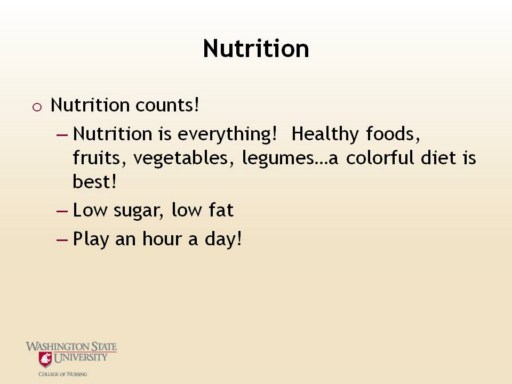| front |1 |2 |3 |4 |5 |6 |7 |8 |9 |10 |11 |12 |13 |14 |15 |16 |17 |18 |19 |20 |21 |22 |23 |24 |25 |26 |27 |28 |29 |30 |review |
 |
General recommendations:
Generally speaking, this lecture has been about healthy eating, exercise and the implications of what can happen if a person does not…but the question that needs to be asked is so…how much is enough…what kind of nutrition is correct? Although this lecture will not discuss nutrition in depth, there is some basic information that can be helpful. According to World Health Organization (2010), children need to have a varied diet, the more colorful the better….however, children need to simply eat more fruits and vegetables, fresh is best. Canned has too much sugar and salt. Lean proteins such as chicken and fish. Beef, veal and lamb are very high in fat. When having breads, whole grain is best. With rice, brown rice is preferred. The key is to have as much fresh, wholesome food as possible for children, and adults.
Children also need to play outside, or inside if outside is not a good choice, but play with moderate activity at least one hour a day. Playing soccer, swimming, walking, running, playing basketball…anything that helps children to move their bodies.
Reference: WHO Childhood Obesity, from http://www.who.int/dietphysicalactivity/childhood_what_can_be_done/en/print.html
|